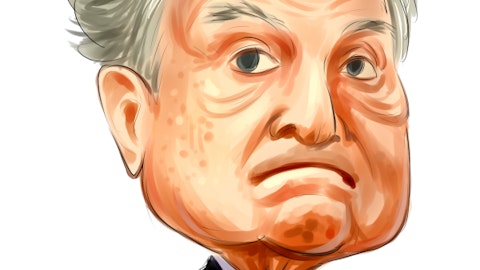4. Amazon.com, Inc. (NASDAQ:AMZN)
Third Point’s Stake Value: $783,570,000
Percentage of Third Point’s 13F Portfolio: 5.46%
Number of Hedge Fund Holders: 279
Dan Loeb has publicly stated that Amazon.com, Inc. (NASDAQ:AMZN) has an unexplored value of $1 trillion between its e-commerce setup and the Amazon Web Services segment. Dan Loeb, via Third Point, boosted his Amazon.com, Inc. (NASDAQ:AMZN) stake in Q4 2021 by 28%, holding 235,000 shares worth $783.5 million. The stock represents 5.46% of the hedge fund’s 13F portfolio.
In 2021, Amazon.com, Inc. (NASDAQ:AMZN)’s full-year revenue stood at $469.8 billion, compared to $386 billion in the previous year. Net income in 2021 grew 56.41% from $21.3 billion in 2020 to $33.3 billion.
Evercore ISI analyst Mark Mahaney reiterated his Outperform rating on Amazon.com, Inc. (NASDAQ:AMZN) with a $4,300 price target on March 25. He “modestly” increased his FY23 and FY24 estimates above the Street projections, naming Amazon.com, Inc. (NASDAQ:AMZN) his number one mega cap internet long idea. He believes the market may be underappreciating four elements of the bullish view on Amazon.com, Inc. (NASDAQ:AMZN), such as the shipping elasticity opportunity, brand advertising revenue channels, the grocery opportunity, and “just how cheap” the shares are.
Insider Monkey’s hedge fund data reveals that Amazon.com, Inc. (NASDAQ:AMZN) was found in the portfolios of 279 funds at the end of the fourth quarter of 2021, up from 242 funds in the preceding quarter. The total stakes in Amazon.com, Inc. (NASDAQ:AMZN) held during Q4 amounted to more than $49 billion. Fisher Asset Management owned a prominent position in the company, with 2.1 million shares worth $7.2 billion.
Here is what Mercator International Opportunity Fund has to say about Amazon.com, Inc. (NASDAQ:AMZN) in its Q4 2021 investor letter:
“Transformative technologies often generate euphoria. People are excited by the big new thing that is changing the world. We saw this pattern with the boom of westward canal transportation at the dawn of the nineteenth century. Railway stocks similarly attracted large numbers of eager investors a few decades later. Then came the electrification of America, the telephone, and the automobile industry, to name just a few transformative technologies.
The initial euphoric phase always ends with a reality check. Valuations come back to earth. At the end of the cycle, only a few companies remain standing. A shakeout has a way of clarifying the field of opportunities.
For example, readers may recall that when the internet bubble burst two decades ago, Amazon.com, Inc. (NASDAQ:AMZN) stock suffered greatly but pet.com was gone. For those investors who had stayed on the sidelines, this was an excellent time to buy Amazon. The company’s business model had shown its merits and competition was rapidly shrinking. The stock price was now also much more attractive.”





